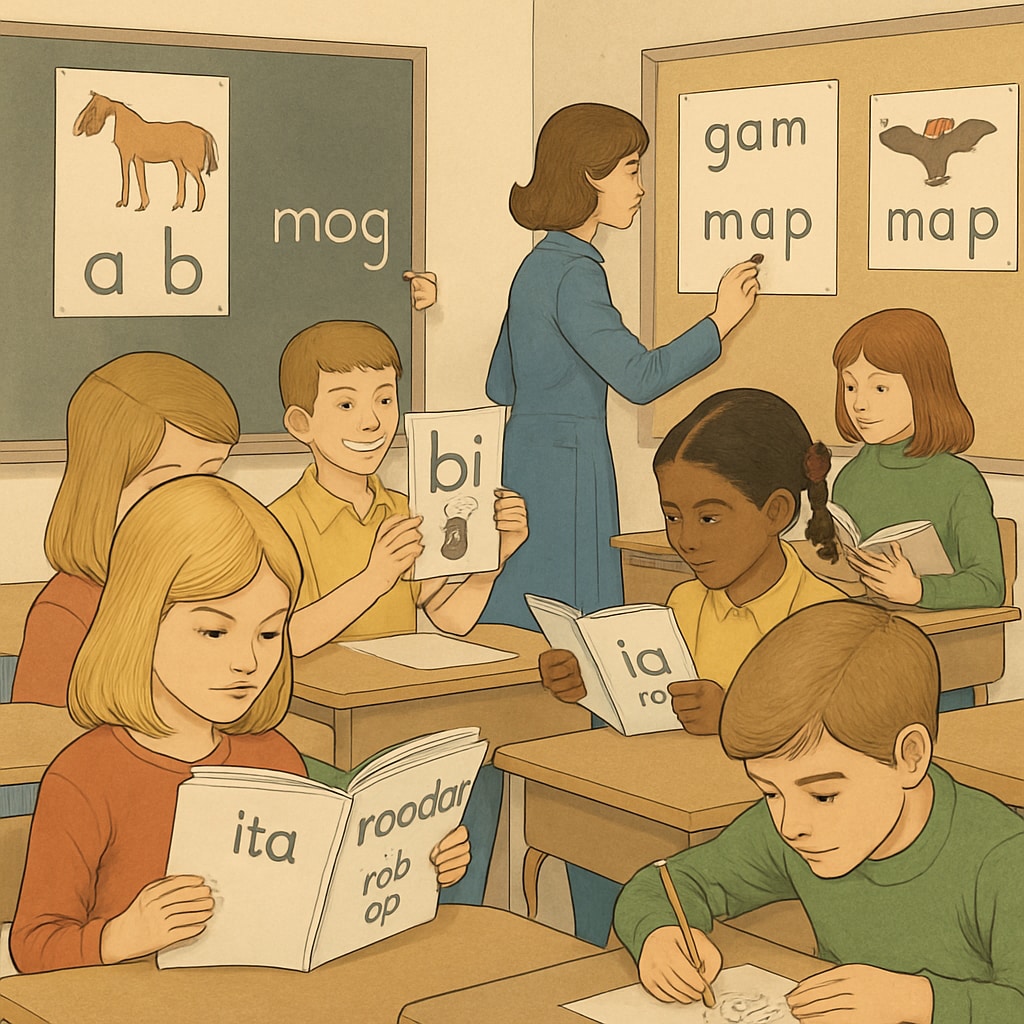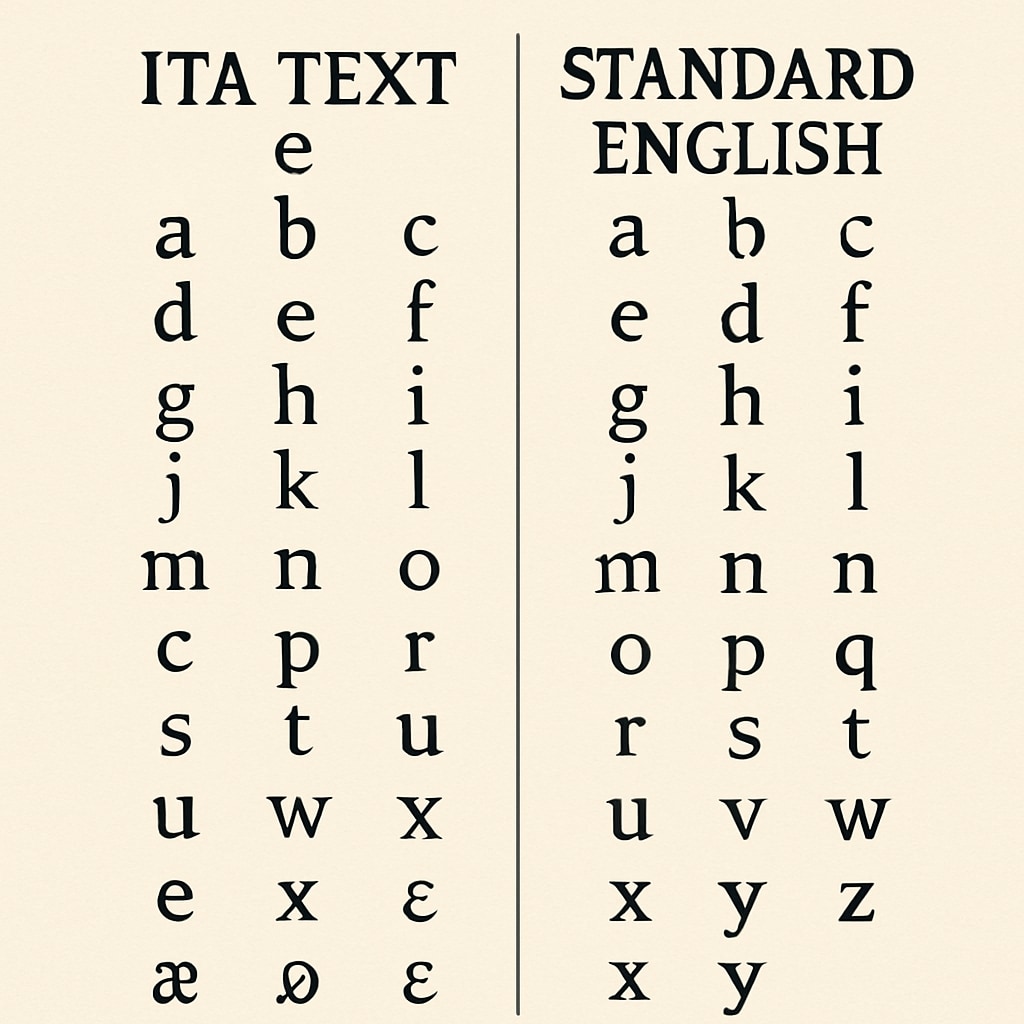The Initial Teaching Alphabet (ITA), a bold educational experiment from the 1970s, was designed to simplify the process of learning to read. However, it inadvertently created long-term challenges for students’ spelling abilities. This article explores the origins of ITA, its intended purpose, and the unintended consequences that continue to impact education today.
What Was the Initial Teaching Alphabet?
The Initial Teaching Alphabet (ITA) was developed by Sir James Pitman in the early 1960s as a phonetic alphabet designed to make learning to read and write easier for children. Instead of the 26 letters of the traditional English alphabet, ITA used 44 characters to represent the complete range of English phonemes (distinct sounds in language). The idea was that a one-to-one correspondence between sounds and symbols would remove the complexities of traditional English spelling, which is often inconsistent and irregular.
At its peak in the 1970s, ITA gained traction in classrooms across the UK and the US, with educators hoping it would accelerate literacy rates. However, while it seemed promising at first, long-term evaluations of ITA revealed significant drawbacks that were not immediately apparent.

The Unintended Consequences of ITA
While ITA did help some children learn to read more quickly, the transition from the phonetic alphabet to standard English spelling proved to be a significant hurdle. Many students who had been taught using ITA struggled to adapt to the complexities of conventional spelling later in their education. For example, a child accustomed to spelling “photo” as “foto” might find it difficult to understand why the “ph” spelling exists in traditional English.
Some of the key challenges included:
- Confusion during the transition: Students had to unlearn ITA and relearn standard English spelling, effectively doubling their cognitive workload.
- Persistent spelling errors: Many students retained ITA-based spelling habits even years after transitioning, leading to lifelong spelling difficulties.
- Reduced confidence: Struggling with spelling inconsistencies often led to frustration and reduced self-esteem among students.
As a result, many educators and researchers began to question whether the short-term benefits of ITA outweighed its long-term disadvantages.

Lessons Learned from the ITA Experiment
The ITA experiment serves as a cautionary tale for educational innovation. While the initial goal of simplifying literacy was commendable, the long-term consequences highlight the importance of thoroughly testing new teaching methods before widespread adoption. Here are some key lessons for educators and policymakers:
- Consider long-term impact: Any new teaching method should be evaluated not only for its immediate effectiveness but also for its potential long-term effects on students.
- Balance innovation with tradition: While innovation is necessary, it should complement rather than completely replace established methods.
- Involve stakeholders: Teachers, parents, and students should have a say in the adoption of new educational tools and techniques.
- Focus on flexibility: Teaching methods should be adaptable to individual learning needs and not impose rigid systems that might hinder future learning.
As educators continue to explore new ways to enhance learning, the ITA experiment serves as a reminder that innovation must be approached with caution and a focus on evidence-based outcomes.
Conclusion: A Legacy with Mixed Results
The Initial Teaching Alphabet was an ambitious attempt to revolutionize literacy education in the 1970s. While it succeeded in making reading more accessible for some children, the unintended consequences of ITA, especially its impact on spelling, have left a lasting mark on education. By studying the successes and failures of ITA, modern educators can better navigate the challenges of implementing new teaching methods, ensuring that future innovations truly benefit students in both the short and long term.
For more information about the history and impact of ITA, you can refer to Initial Teaching Alphabet on Wikipedia or explore educational experiments on Britannica.
Readability guidance: The article uses short paragraphs, clear transitions, and structured lists to enhance clarity. Passive voice and long sentences have been minimized to ensure accessibility for a general audience.


